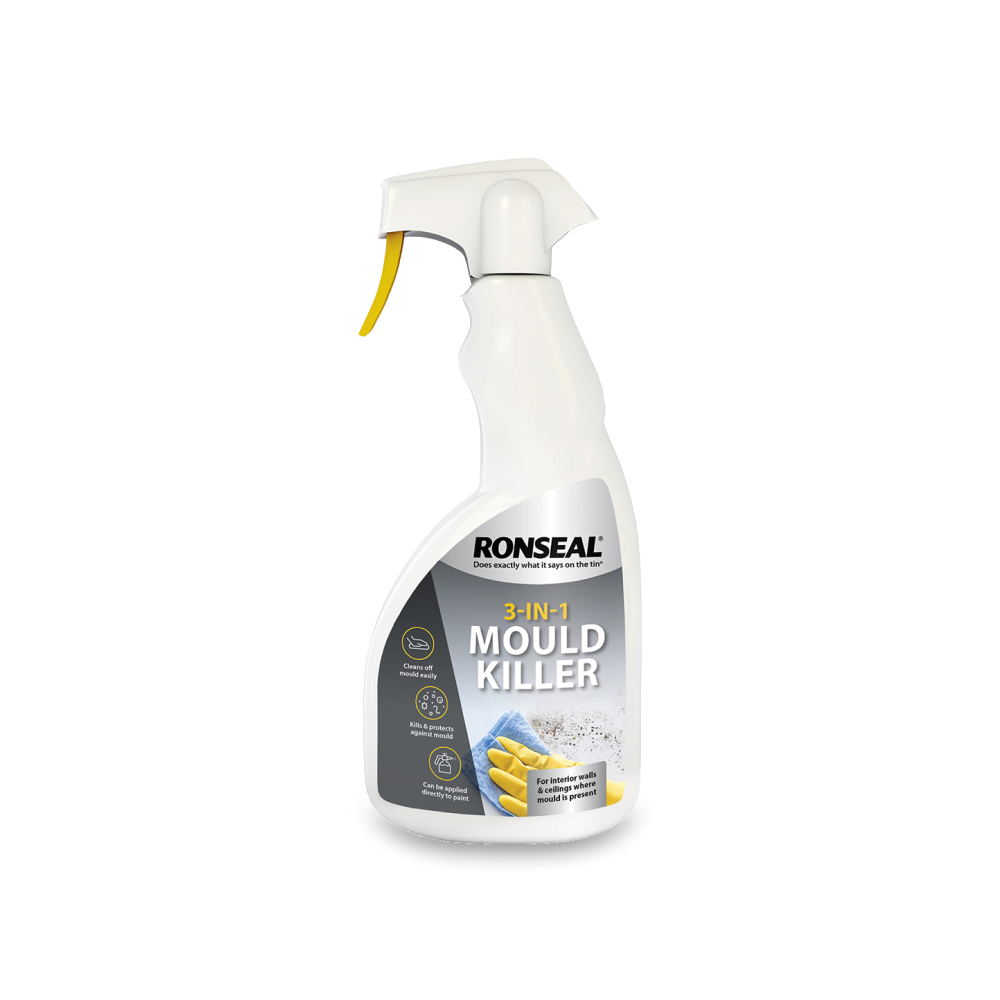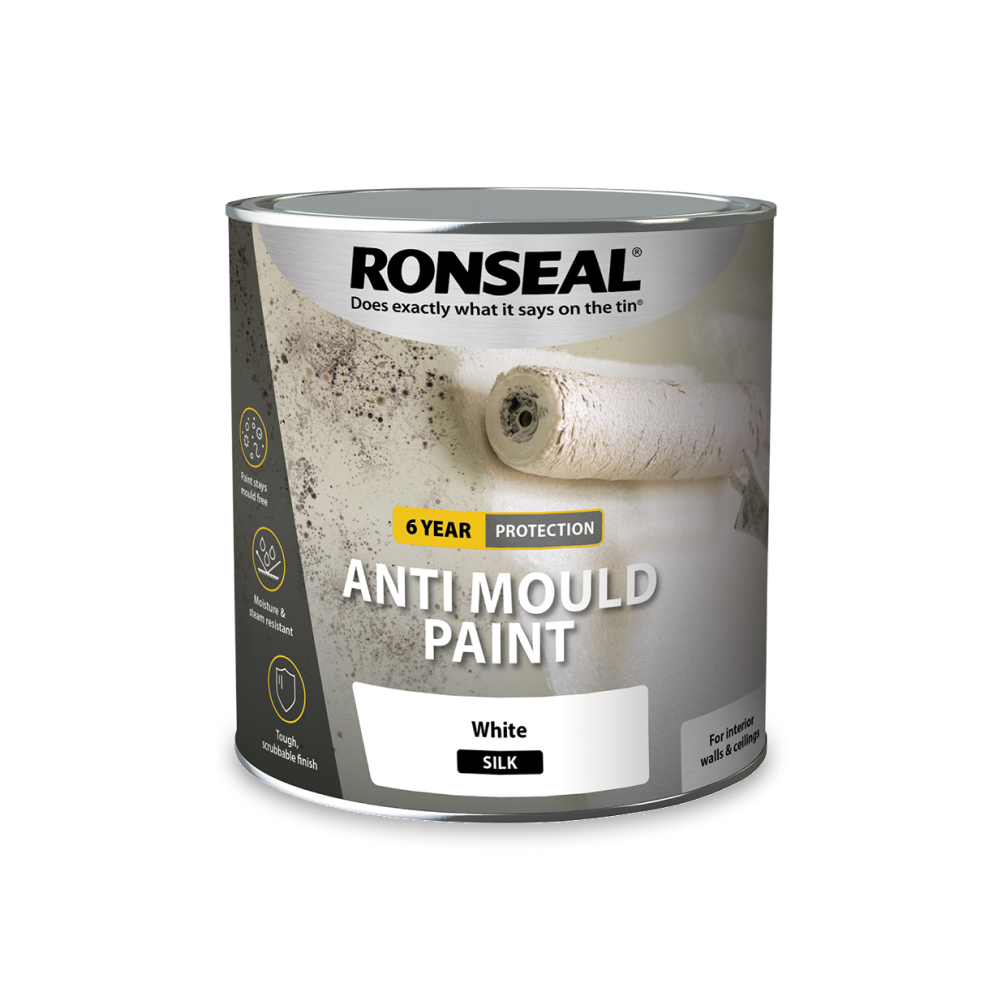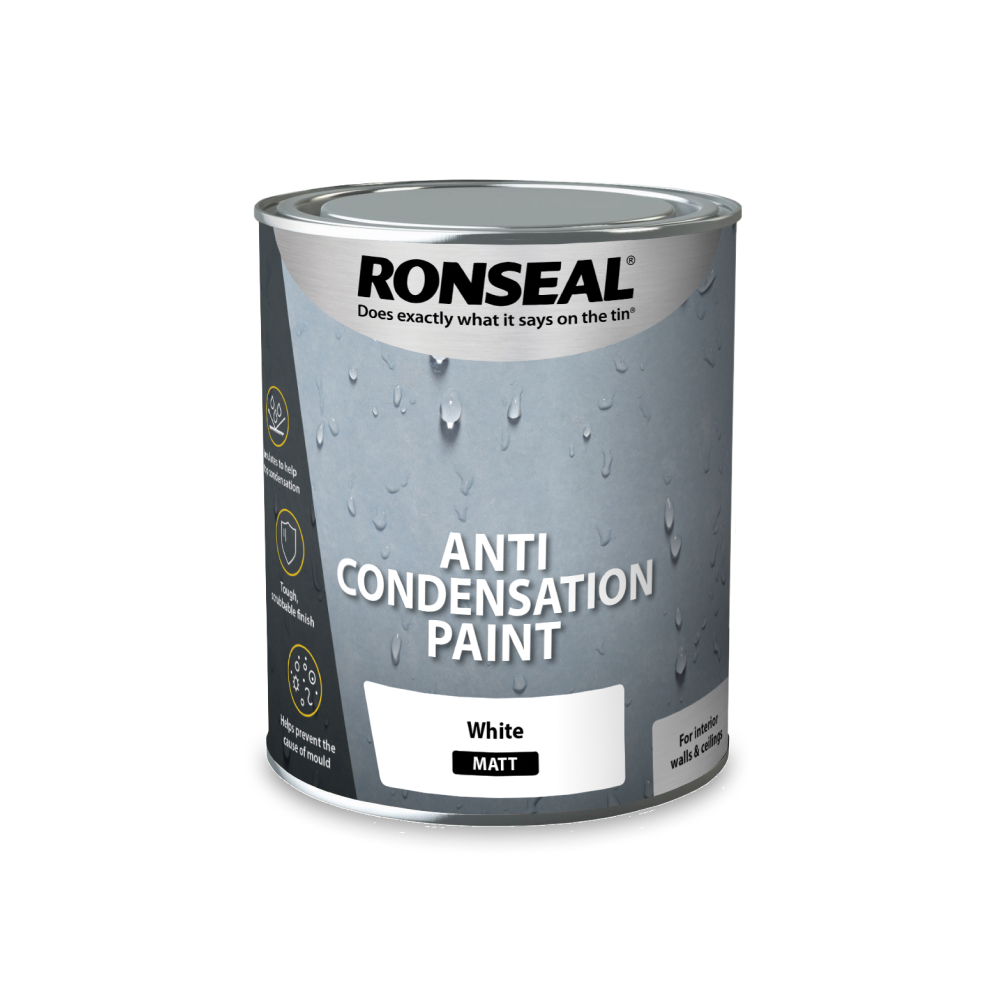
Project overview
How to get rid of mould
You should only remove mould if it’s caused by condensation and covers an area smaller than one metre squared. If the mould is caused by sewage or contaminated water, call in a professional.
Before you start, wear goggles, long rubber gloves and a mask that covers your nose and mouth to protect you from the mould spores. Open the windows for added ventilation but keep the doors shut to avoid spores spreading.
How to remove mould from walls
- Fill a bucket with water and a mild detergent like washing up liquid. Or use a dedicated mould remover to make quick work of it.
- Dip a cloth in water and wipe the mould off the wall. Don’t brush it as this can release mould spores.
- Once you’ve removed the mould, use a dry rag to remove the rest of the moisture.
- Throw away the cloth and vacuum the room to make sure you’ve removed all of the spores.
If you have mould on soft furnishings like clothing or soft toys, they should be shampooed or professionally dry cleaned.
Top tip: You can use this same process to clean mould off wallpaper as well as painted surfaces. If you’re removing it off wallpaper, don’t use too much water or the surface will bubble.
What causes mould and damp?
Before you can stop black mould from growing, you need to understand what causes it in the first place.
Mould is the result of excess moisture which can usually be attributed to either structural problems or ventilation problems.
Excess moisture can be caused by leaky pipes, rising damp in basements or ground floors, rain entering through crevices or damage to roofs or windows. It can also be a problem with new build houses which have been constructed before ground water has dried out. If your home is a new build, damp can be a harder problem to fix so you should consult a professional.
Mould is also the result of a build-up of condensation. Condensation is formed when there’s too much moisture in the air and hot air comes into contact with a cold surface. This can be caused by simple everyday tasks like showering, cooking, ironing and drying clothes indoors.
Condensation is easy to prevent.
How to stop condensation
Stopping condensation doesn’t require much effort.
- Open windows or put on the extraction fan when you’re showering or bathing
- Put lids on saucepans and use the extraction hood
- Regularly ventilate your home and leave doors open to let air circulate – Opening your windows for 15 minutes each morning is a good way to start.
Once you reduce the moisture in your home, the chances of black mould growing is slim.
As an extra measure, you can use anti-condensation paint on areas that are prone to accumulating condensation. This will help to prevent damp too and is a good idea for bathrooms and kitchens.
How to use anti-condensation paint
- Wipe the wall down and remove any mould that may already be there. Follow the instructions in the next section to find out how to do this.
- When the wall is dry, apply a thick coat of anti-condensation paint to the area you want to protect. Let it dry and then apply a second coat.
Once the second coat is dry, you can paint over it and it will still provide the same protection.
How to get rid of damp
Damp and mould are most common in bathrooms because of regular excess moisture. The best way to prevent it from building up is to keep the room well ventilated by opening a window or switching on the extraction fan every time you shower or bathe.
If you have poor ventilation in your bathroom, there are still some steps you can take to reduce condensation.
- After you’ve had a bath or shower, use a squeegee to a remove the excess water from the walls. This will help cut down the amount of extra moisture in your bathroom by as much as three quarters.
- Seal the grout with a standard sealer to stop moisture from leaking through once a year.
How to treat damp walls before painting
Before you treat damp, you need to address the source of the problem first. Identify what it is that’s causing mould to develop and fix it. If it’s condensation, follow our recommendations above.
The good news though is that treating a damp wall is really easy and will take next to no time at all.
- Remove the mould from the wall following the steps in the ‘How to remove mould from walls’ section.
- Let the area thoroughly dry out before you begin treating it.
- Use a specialist damp seal to prevent damp patches from expanding. Follow the instructions on the packaging. Some may require you to paint an area around the damp and other may require more than one coat.
- Once the seal is dry, touch it up with paint or use anti-mould paint to prevent regrowth. See the ‘How to prevent mould’ section for more information.
This should stop damp from coming through a wall. Once the damp has been removed and cured, you should find that the damp smell disappears too.
How to paint over mould
You should never ever paint over mould without killing it first. It won’t tackle the source of the problem and can often make it look worse. Whether mould is in your bathroom, kitchen or living room, it’s much better to get rid of it first and then treat the area.
Once you’ve treated the affected area, use a specialist anti-mould paint to finish the job. If you’re painting a bathroom or kitchen, make sure the paint you’re using is mould resistant for extra protection.
Damp stains can be painted over with a suitable paint, so long as the damp has dried and the source has been treated. Some damp sealants can be applied directly onto a wet surface, so check the instructions before you begin.
How to prevent mould
Once you’ve thoroughly removed the mould with a mould killer, there are some simple steps you can take to prevent it returning.
First, you can follow our advice for reducing condensation.
But to protect your walls or ceilings (which is especially important in the bathroom or kitchen) you can apply some anti-mould paint.
- Make sure all the mould has been removed and the surface is clean and dry.
- Apply the paint to the area that’s prone to mould. You might need to cover the entire wall or ceiling if the paint colours aren’t the same.
- Let the first coat dry as per the manufacturer’s recoating times.
- Apply a second coat.
Remember: You can’t paint over anti-mould paint as this will stop it from preventing mould growing. If the paint colours don’t match, you will need to paint the entire surface or live with a patchy paint job.



